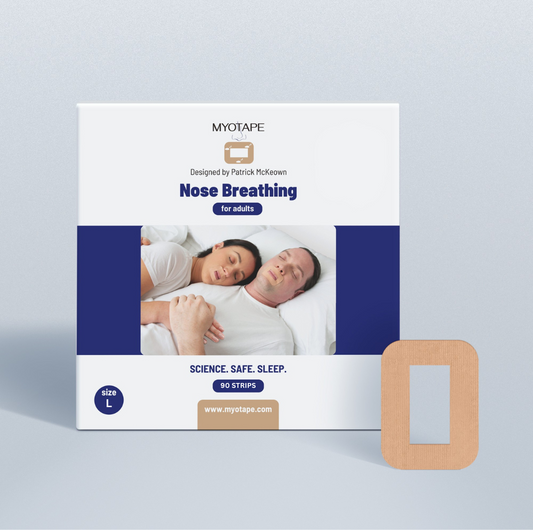The nose plays a vital role in shaping our speech by adding a distinct quality through nasal resonance. When we communicate, the nasal cavity acts as a resonating chamber that enhances the sound of our voice, making it fuller and more expressive. It is vital to know how nasal resonance enhances vocal depth, because it could improve our personal and professional interactions.
With that in mind, in this article you will find out nasal resonance is, why it is important in having clear communication, and how nasal breathing can help you achieve nasal resonance.
Key Takeaways
- Nasal resonance adds depth to the voice and enhances communication.
- Understanding nasal resonance improves speech quality.
- Breathing properly through the nose can improve nasal resonance.
What is Nasal Resonance?
Nasal resonance occurs when sound waves produced by the vocal cords resonate within the nasal cavity. It plays a crucial role in enriching speech by affecting the quality of the voice. It occurs as sound waves interact within the nasal cavity, providing depth and enhancing vocal expression.
Resonance in Speech
Resonance in speech is the amplification and quality tuning of sound as it travels through various cavities in the body. The vocal cords produce sound, and its characteristics are shaped as it passes through the vocal tract. This includes areas like the mouth and, importantly, the nasal cavity. Nasal resonance specifically influences the sound by adding distinct qualities through its interaction with these areas.
The nasal cavity's size and shape impact how sound waves move, adding either richness or clarity. This makes nasal resonance vital to how speech is perceived. Without it, a voice may sound flat and less engaging. In the context of speech disorders, resonance issues can lead to conditions like hypernasality or hyponasality, where the balance of vibration shifts undesirably.
Anatomy of Nasal Resonance
Let us take a look at the anatomy involved in nasal resonance. The process begins in the vocal folds, where sound is created. As it travels up, it enters the nasal cavity, where resonance is significantly affected by the cavity’s size and shape.
The nasal cavity functions like a filter, selectively enhancing different sound frequencies. The interaction between the nasal, oral, and pharyngeal cavities creates a balance that determines the voice's unique quality. When these areas are properly aligned and functioning well, they allow for clear, expressive speech.
Issues can occur when there is an obstruction or irregularity in these structures, affecting resonance.
The Role of Nasal Resonance in Communication
Nasal resonance plays a key role in how individuals communicate. It influences the sound quality of one's voice by adding depth and character. This allows speakers to convey emotions and emphasis more effectively during conversations.
The nasal cavity acts as a resonance chamber. It modifies the sound produced by the vocal cords, enhancing certain frequencies. This complex interaction is crucial for creating a wide range of vocal expressions.
In communication, nasal resonance helps differentiate speech sounds. It assists in distinguishing between words and gives speech its unique texture.
Effective communication often relies on the ability to express subtle emotions. Nasal resonance adds nuance, making speech more engaging and expressive.
Professionals like singers and actors often focus on optimizing nasal resonance. They use techniques to control the flow of sound through their nasal passages, enhancing performance.
Nasal resonance is also essential in different languages. Some languages depend more heavily on nasal sounds, making good control of nasal resonance important for speakers.
By understanding the role of nasal resonance, individuals can improve their communication skills, helping them better connect with others. This highlights its significance in both everyday interactions and professional settings.
Balancing Nasal Resonance
Balancing nasal resonance is important for effective communication. Nasal resonance adds depth to the voice, but too much can lead to a nasal sound that is hard to understand. Keeping the right balance makes speech clearer and more pleasant to listen to.
Therefore, a balance in nasal resonance is important. Excessive or insufficient resonance can lead to speech disorders, such as hypernasality or hyponasality, impacting speech clarity.
Characteristics of a Resonant Voice
A deep, resonant voice carries a richness and fullness that can make speech more engaging. It involves the efficient use of the vocal cords and the vocal tract to enhance sound quality.
- Richness: Full and vibrant sound quality.
- Balanced Tone: Even distribution of sound frequencies.
- Dynamic Range: Ability to vary loudness and pitch smoothly.
- Consistency: Stable and reliable sound across different pitches and volumes.
- Clarity: Clear and distinct articulation.
- Volume: Adequate loudness without strain.
- Ease of Production: Effortless and comfortable to produce.
Why Nasal Breathing Helps You Achieve a Resonant Voice
Proper nasal breathing plays a crucial role in achieving a resonant voice through nasal resonance. Here’s how it helps:
First, nasal breathing humidifies and warms the air before it reaches the vocal cords, which helps keep them moist and reduces the risk of dryness and irritation. This lubrication is essential for smooth and efficient vocal cord vibration, contributing to a resonant voice.
Second, breathing through the nose regulates the airflow more effectively than mouth breathing. This controlled airflow supports consistent and steady breath support, which is vital for maintaining a resonant voice.
Proper nasal breathing also prevents excessive strain on the vocal cords by ensuring that the air passing through is adequately filtered and conditioned. This reduces the likelihood of vocal fatigue and helps maintain a clear and resonant voice.
In addition, breathing nasally promotes the use of nasal cavities as resonating chambers. When sound waves pass through these cavities, they enhance the richness and fullness of the voice, contributing to a more resonant sound. It helps maintain balanced pressure in the vocal tract, which is crucial for producing a consistent and resonant tone. This balance prevents unnecessary tension in the throat and vocal cords.
You may not know this, but proper nasal breathing encourages better posture, which is essential for optimal vocal production. Good posture aligns the vocal tract properly, allowing for better resonance and projection of the voice.
Without the nose, the voice would sound flat and lack depth. Nasal resonance adds emphasis and nuance to our speech, helping us communicate effectively. However, too much nasal resonance (hypernasality) can make speech harder to understand and negatively affect social interactions.
Finally, nasal breathing reduces the harmful effects of mouth breathing. This is because mouth breathing can dry out the vocal cords and lead to a harsher, less resonant voice.
In summary, breathing through your nose properly enhances vocal resonance by ensuring optimal moisture, airflow, and pressure in the vocal tract, reducing strain, and utilizing the nasal cavities as effective resonating chambers. So, if you are wondering how you can improve your speaking voice resonance, the first step is to breathe nasally.
MyoTape Helps You Achieve Nasal Resonance
MyoTape is an innovative solution designed by breathing expert, Patrick McKeown for improving nasal breathing, playing a crucial role in speech enhancement. Effective nasal breathing supports proper resonance, enhancing speech clarity.
Designed for both adults and children, MyoTape gently holds the lips together. This encourages nasal breathing during sleep and activities, which can be beneficial for speech and communication.
MyoTape is suitable for adults and kids, making it a beneficial tool for everyone in your family to improve their speech through better nasal resonance. Its design is intended for anyone seeking to communicate more effectively using the power of balanced nasal resonance.
Are you ready to tap into the power of nasal resonance? Head to our products page and get your MyoTape today. Start communicating more effectively with the help of balanced nasal resonance!








